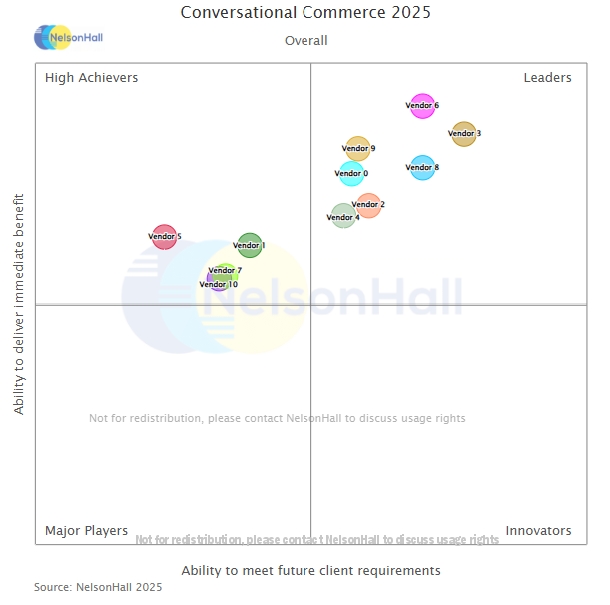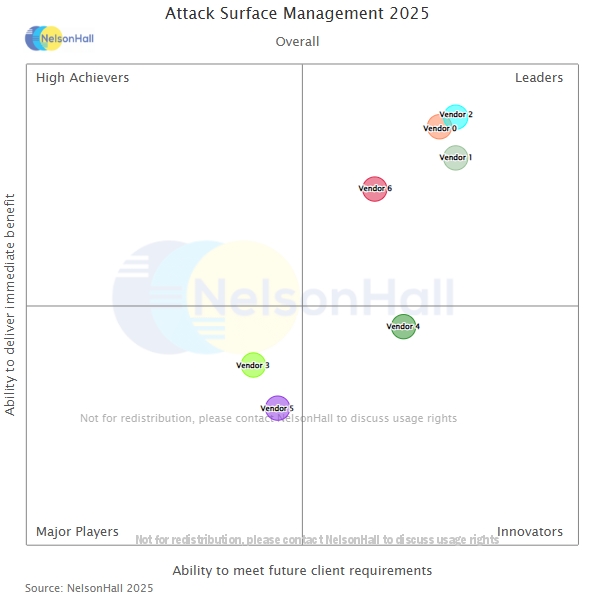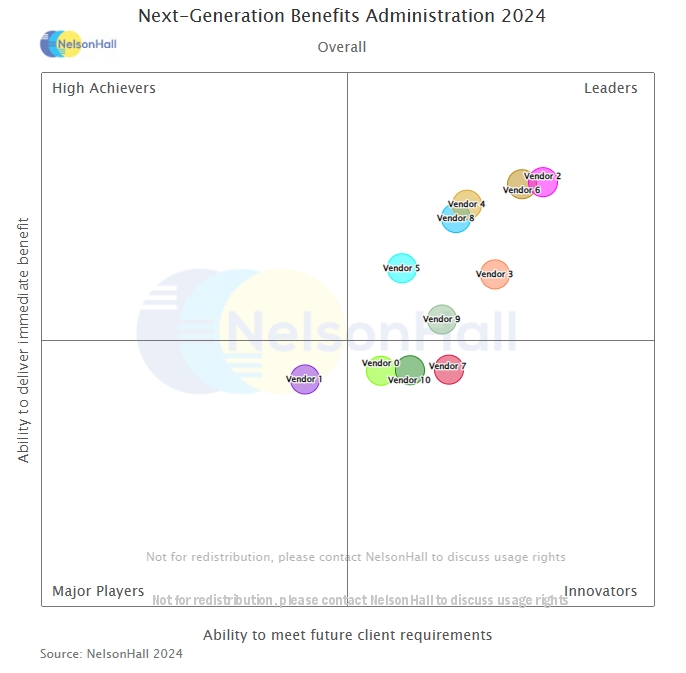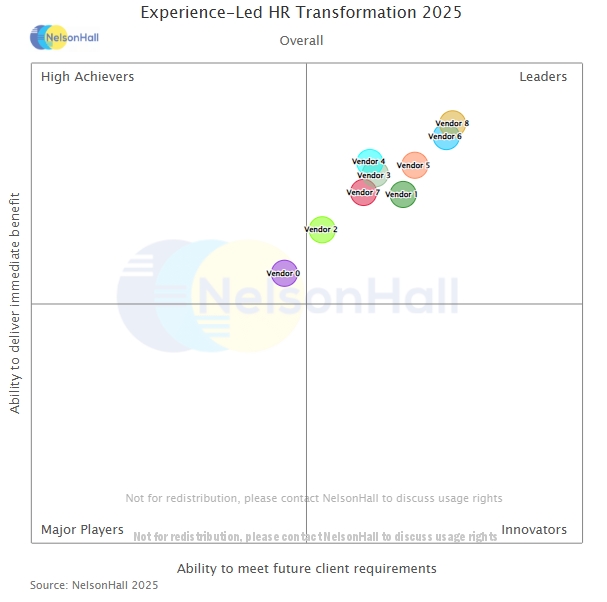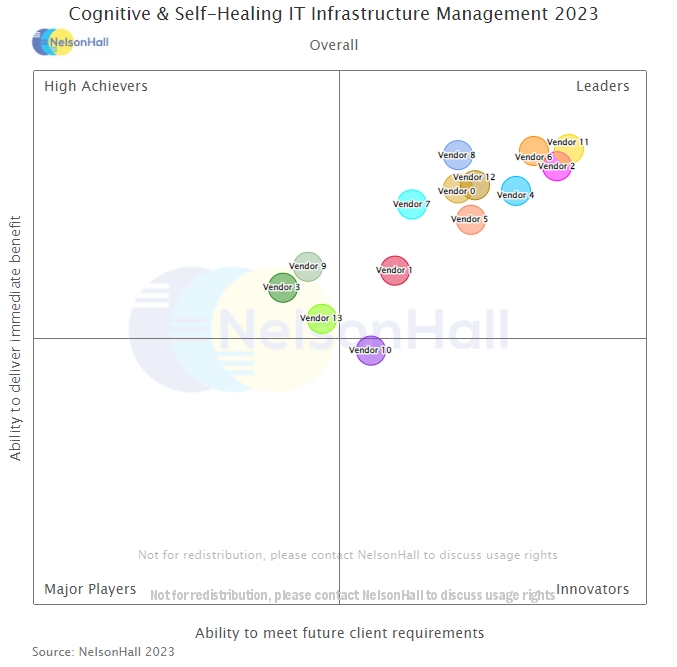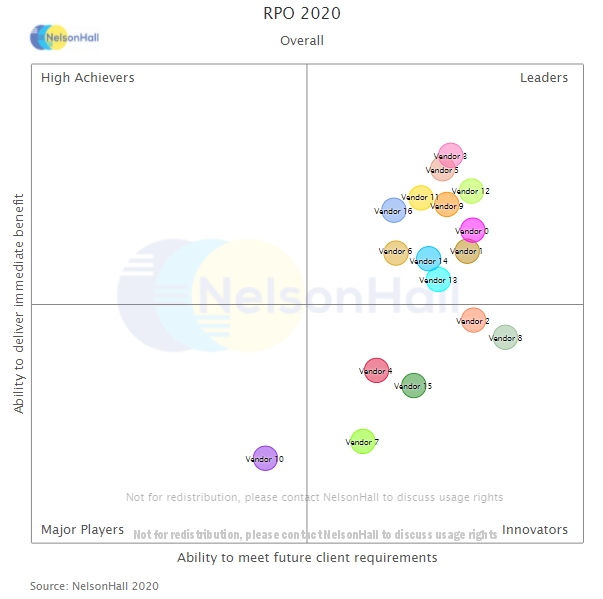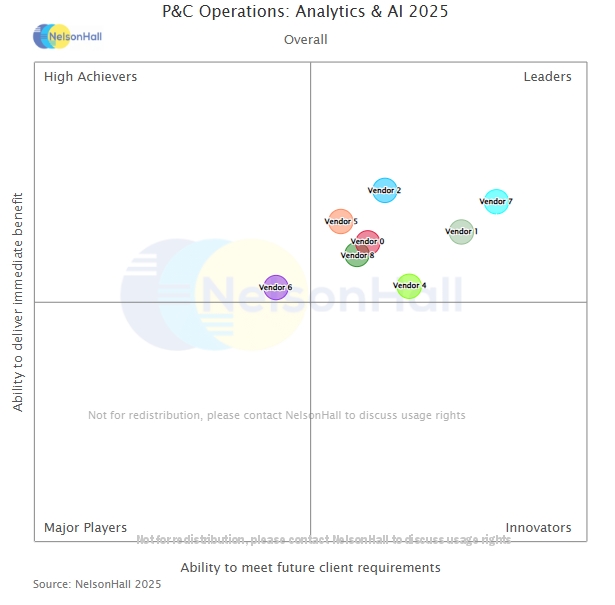login here to personalize:
latest NEAT reports:
view all NEAT reportsfeatured reports:
Conversational Commerce
May 13, 2025 | Market Analysis by Ivan Kotzev
NelsonHall’s market analysis of the Conversational Commerce market consists of 109 pages and focuses on strategies for 2025 and beyond. [...]view this reportdownload abstract
latest vendor assessments:
NelsonHall keeps tabs on all these vendors so that you don't have to do so, providing all the analysis of vendor capabilities that you require for shortlist selection
Tata Consultancy Services - ServiceNow Services
May 27, 2025 | Vendor Analysis by Gaurav Parab
This NelsonHall vendor assessment analyzes Tata Consultancy Services' offerings and capabilities in ServiceNow services [...]view this reportdownload abstractExela Technologies - Strategic Insights in Revenue Cycle Management (RCM)
May 22, 2025 | Vendor Analysis by Bilal Chaudhry
This NelsonHall vendor assessment analyzes Exela Technologies' offerings and capabilities in Revenue Cycle Management (RCM) [...]view this reportdownload abstractInfosys - Modernizing Procurement Through Digitalization
May 20, 2025 | Vendor Analysis by Vaibhav Wardhan
This vendor assessment analyzes Infosys' offerings and capabilities in procurement services [...]view this reportdownload abstractRemote - Global Employer of Record Services
May 20, 2025 | Vendor Analysis by Jeanine Crane-Thompson
This NelsonHall vendor assessment analyzes Remote's offerings and capabilities as a provider of global employer of record services [...]view this reportdownload abstractCXC Global - Global Employer of Record Services
May 19, 2025 | Vendor Analysis by Jeanine Crane-Thompson
This NelsonHall vendor assessment analyzes CXC Global's offerings and capabilities as a provider of global employer of record services [...]view this reportdownload abstract
Latest on Twitter by @NHInsight:
Follow NelsonHall analysts to monitor ongoing developments in business process services




















